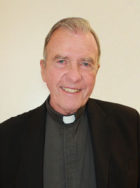Third in a series
I PROBABLY COULD not even list all the reasons why I am so enthusiastic about Pope Francis’ Apostolic Exhortation Gaudete et Exultate (“Rejoice and Be Glad”). One of the reasons I think it is such an important document is that a kind of dualism has crept into the way some Catholics think about what is and what is not holy. We throw around the word “secular” so often that we can inadvertently think that there are only particular places that are sacred and certain actions that are holy. I think Pope Francis is trying to broaden our vision and deepen our appreciation of what our faith tells us about ourselves and the mystery of the Holy Spirit’s presence in our lives. If by “secular” we mean some place in which God is not present, there is no such place.




